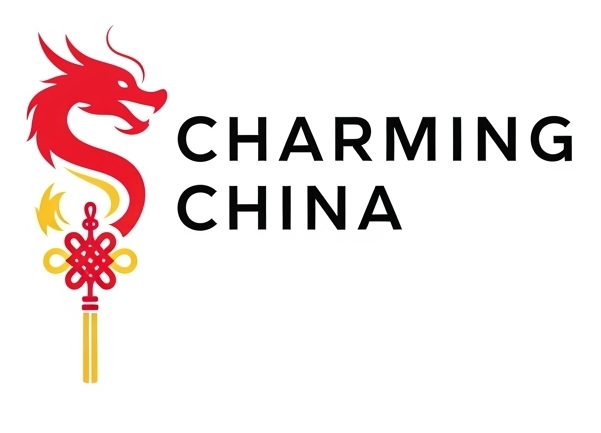Food Therapy & TCM – Healing through food, the Chinese way
In Traditional Chinese Medicine (TCM), food is far more than sustenance — it’s medicine you eat every day. For thousands of years, Chinese healers have used food to nourish the body, balance energy (Qi), and prevent illness before it starts. Instead of counting calories or nutrients, TCM food therapy focuses on how food feels and functions inside your body — warming or cooling, strengthening or detoxifying.
This ancient wisdom still guides millions of people today, helping them stay in tune with the seasons and their body’s natural rhythms.
The Philosophy Behind TCM Food Therapy
At the heart of TCM lies the idea of balance — between Yin and Yang, the Five Elements, and the flow of Qi (vital energy).
- Yin foods cool and moisten the body — like cucumber, pear, or tofu.
- Yang foods warm and energize — like ginger, lamb, and chili.
- Neutral foods nourish gently — such as rice, carrot, or chicken.
By eating foods that balance your internal state, you can prevent imbalances that lead to fatigue, poor digestion, or illness.
This is why food therapy is often called “the first medicine” in Chinese culture — it comes before herbs, acupuncture, or drugs.
The Five Elements and Food
In TCM, all foods are classified according to the Five Elements (五行) — Wood, Fire, Earth, Metal, and Water — each linked to an organ system, flavor, and emotion.
| Element | Flavor | Organs | Function | Common Foods |
|---|---|---|---|---|
| Wood | Sour | Liver, Gallbladder | Promotes flexibility, detox | Lemon, vinegar, spinach |
| Fire | Bitter | Heart, Small Intestine | Improves circulation | Bitter melon, tea, sesame |
| Earth | Sweet | Spleen, Stomach | Strengthens digestion | Rice, pumpkin, sweet potato |
| Metal | Pungent (spicy) | Lung, Large Intestine | Promotes Qi flow, clears mucus | Ginger, garlic, radish |
| Water | Salty | Kidney, Bladder | Nourishes essence | Seaweed, soy sauce, black beans |
Eating with the Five Elements helps maintain organ harmony — not through strict diets, but through seasonal awareness and balance.
Eating with the Seasons
Chinese food therapy follows nature’s rhythm, adjusting diet by season:
- 🌱 Spring (Wood): Eat light and green foods — sprouts, leafy vegetables — to support the liver and release winter stagnation.
- 🔥 Summer (Fire): Choose cooling foods — cucumber, watermelon, mung beans — to clear heat and nourish fluids.
- 🌾 Late Summer (Earth): Focus on sweet, grounding foods like rice, corn, and pumpkin to strengthen digestion.
- 🍂 Autumn (Metal): Eat white and moistening foods — pear, lotus root, honey — to protect the lungs and dryness.
- ❄️ Winter (Water): Enjoy warming stews and salty, dark foods — lamb, black beans, walnuts — to support kidney energy.
This seasonal pattern reflects the TCM idea of living in harmony with nature, aligning diet with environmental energy.
Food as Daily Medicine
In TCM, even simple dishes are designed to heal and harmonize. Here are a few classic examples:
| Dish | Healing Purpose | Main Ingredients |
|---|---|---|
| Ginger & Date Tea | Warms Yang, strengthens Qi | Fresh ginger, red dates |
| Lotus Root Soup | Moistens lungs, clears heat | Lotus root, goji berries |
| Congee (Rice Porridge) | Nourishes digestion, gentle for recovery | Rice, yam, jujube |
| Black Sesame Paste | Tonifies blood, supports hair | Black sesame, glutinous rice |
| Mung Bean Soup | Clears heat, detoxifies | Mung beans, sugar, water |
These recipes show that healing doesn’t require medicine — just mindful cooking.
Food Therapy in Modern Life
Today, many people rediscover TCM food therapy for its holistic approach — especially in combating stress, fatigue, and digestive issues caused by modern lifestyles.
- Instead of cold smoothies in winter, drink warm soups to protect your Qi.
- Replace coffee with ginger tea to boost circulation.
- Choose seasonal vegetables instead of imported produce to stay energetically balanced.
Even small shifts in eating habits can bring long-term vitality when guided by TCM wisdom.
The Preventive Power of Food
Unlike Western medicine, which often treats illness after it appears, TCM emphasizes “治未病 (zhi wei bing)” — preventing disease before it happens. Balanced eating strengthens your Qi and immunity, making you less likely to fall ill in the first place.
As the saying goes: “Better to nurture health than to cure disease.” (养生胜于治病)
Food therapy in Traditional Chinese Medicine is a way of life — not a diet plan, but a philosophy of mindful nourishment. By understanding your body’s needs and nature’s cycles, you can eat in harmony with both, cultivating balance, longevity, and inner peace. When every meal becomes a form of medicine, health is no longer something you chase — it’s something you live.
FAQ
Q1: What is the difference between TCM food therapy and nutrition science?
Western nutrition measures nutrients; TCM focuses on energy balance and body constitution. Both complement each other.
Q2: Can TCM food therapy treat illness?
It mainly supports recovery and prevents imbalance, often used alongside herbal medicine or acupuncture.
Q3: How can I start eating the TCM way?
Begin by eating warm, cooked meals; avoid excess raw or cold food; and follow the seasons.
Q4: Are TCM foods vegetarian?
Many are plant-based, but TCM uses moderate animal foods like chicken or fish for balance.
Q5: How do I know my body type?
You can take a TCM Body Constitution Test to understand whether your body is Yin, Yang, Qi-deficient, etc., and adjust your diet accordingly.
